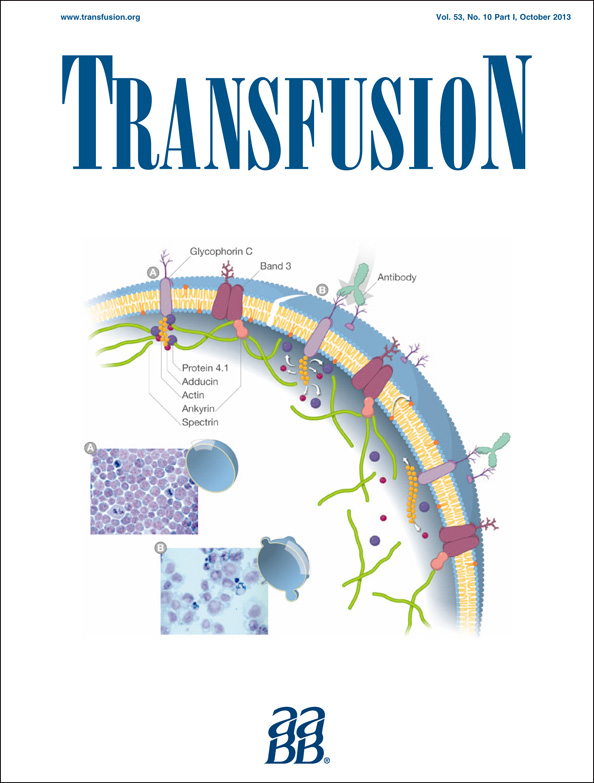PAS-G supports platelet reconstitution after cryopreservation in the absence of plasma
Abstract
Background
Platelet (PLT) concentrates frozen in dimethyl sulfoxide (DMSO) can be stored for extended periods at −80°C. PLTs are frozen in a hyperconcentrated state to avoid postthaw washing and minimize residual DMSO. Consequently, PLTs require reconstitution upon thawing. Although plasma, saline, and PLT additive solutions (PASs) have been used to reconstitute frozen PLTs, a comparison to define an optimal solution for PLT recovery has not been performed.
Study Design and Methods
DMSO (5% final concentration) was added to buffy coat–derived PLTs, followed by centrifugation to concentrate and freezing at −80°C. Cryopreserved PLTs (n = 12 per group) were thawed at 37°C, reconstituted in a unit of thawed frozen plasma, SSP+, or PAS-G. In vitro PLT quality was examined before freezing, immediately after thawing, and 6 and 24 hours after thawing.
Results
After thawing and reconstitution, PLTs in plasma and PAS-G displayed similar recovery (69 and 73%, respectively), while PLT recovery in SSP+ was lower (62%). All PLTs maintained an acceptable pH and metabolic activity during postthaw storage. Frozen PLTs were activated, although the extent differed depending on the reconstitution solution, with PLTs in PAS-G retaining better aggregation responses than PLTs in plasma or SSP+.
Conclusion
Thawing cryopreserved PLTs in PAS-G, without plasma supplementation, resulted in PLTs with similar recovery and in vitro quality indicators as those suspended in plasma. Importantly, using PAS-G enables the PLTs to be ready for use significantly faster than when having to thaw frozen plasma, which may be beneficial in trauma situations.




